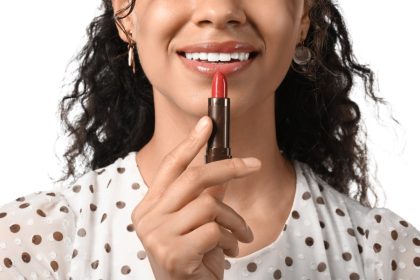You’ve spent small fortunes on those fancy serums and creams promising miracles in a bottle. Your bathroom shelf looks like a mini Sephora. Yet somehow, your skin isn’t transforming into the dewy, flawless canvas those pretty packages promised. The culprit might not be the products themselves—it could be how you’re applying them.
Think of your skincare routine like making a sandwich. The order matters. You wouldn’t put the bread on top of the mustard, would you? Layering your skincare incorrectly is just as chaotic, potentially rendering those expensive products useless or even counterproductive. Let’s decode the art and science of product layering so you can finally get your money’s worth from that skincare collection.
The fundamental rule everyone ignores
The golden rule of skincare layering seems deceptively simple—apply products from thinnest to thickest consistency. But this oversimplification might be sabotaging your results.
Water-based products should generally go before oil-based ones, regardless of thickness. Why? Oil can penetrate water, but water cannot penetrate oil. Once you apply that facial oil, anything water-based applied afterward sits on top without absorbing properly.
This is why your expensive hyaluronic acid serum feels like it’s just sitting on your skin when applied after your moisturizer. It literally is. The moisturizer creates a barrier that prevents the serum from reaching the deeper layers where it can work its magic.
The waiting game that changes everything
Patience isn’t just a virtue—it’s a skincare necessity. Slapping one product on top of another without waiting creates a diluted mixture that diminishes the effectiveness of each formula.
Most active ingredients need time to absorb and adjust your skin’s pH to work effectively. Vitamin C, for instance, works best in an acidic environment. If you immediately follow it with an alkaline product, you’ve essentially neutralized its effects before it had a chance to work.
Give each product at least 30 seconds to absorb, but ideally one to two minutes between layers. For potent actives like retinol or acids, consider waiting up to five minutes. It might feel time-consuming, but this simple pause can double your products’ effectiveness.
Morning versus evening layering strategies
Your skin has different needs throughout the day, and your layering strategy should reflect this. Morning routines should focus on protection, while evening routines prioritize repair and regeneration.
In the morning, after cleansing, apply antioxidant serums like vitamin C to fight free radicals generated by environmental pollutants and UV radiation. Follow with hydrating ingredients like hyaluronic acid, then moisturizer, and finally sunscreen. This sequence creates a protective shield against daily aggressors.
Evening routines can include more potent active ingredients that might make skin photosensitive, like retinoids and exfoliating acids. These go on clean skin, followed by hydrating serums, moisturizers, and possibly facial oils to lock everything in while you sleep.
The pH puzzle most people miss
Every skincare product has a pH level, and these levels can dramatically impact effectiveness. Products work best within their optimal pH range, and applying them in the wrong order can disrupt this delicate balance.
Acids and vitamin C work best at a low pH (around 3.5), while retinol prefers a neutral environment (around 5.5-6). If you apply a high-pH product like soap before your acid exfoliant, you’ve temporarily raised your skin’s pH, reducing the acid’s effectiveness.
This is why dermatologists often recommend waiting after cleansing before applying active ingredients, allowing your skin’s pH to naturally reset. Alternatively, using a pH-balancing toner can create the ideal canvas for the active ingredients that follow.
The combos that boost each other
Some ingredients work better together, creating synergistic effects that enhance results. These power couples deserve to be applied in sequence to maximize their benefits.
Vitamin C and vitamin E plus ferulic acid is a classic combination that provides superior antioxidant protection. The presence of ferulic acid stabilizes both vitamins, while vitamin E regenerates vitamin C, extending its effectiveness.
Niacinamide and hyaluronic acid make another dream team. Niacinamide strengthens the skin barrier, allowing hyaluronic acid to better retain moisture. Apply niacinamide first, wait a minute, then follow with hyaluronic acid for plump, resilient skin.
The combinations that sabotage each other
Just as some ingredients enhance each other, others can cancel each other out or even cause irritation when used together. Understanding these conflicts is crucial for effective layering.
Vitamin C and niacinamide were once thought to be incompatible, though newer research suggests they can work together if formulated properly. However, vitamin C and retinol still don’t play well together in the same application, as they have different optimal pH levels and can destabilize each other.
Exfoliating acids like glycolic or salicylic acid should never be layered with retinol in the same session, as this combination can cause severe irritation and compromise your skin barrier. Instead, alternate these ingredients—acids in the morning, retinol at night, or use them on different days.
The layering hack for maximum hydration
The Japanese “skin flooding” technique has gained popularity for good reason—it works. This approach focuses on maximum hydration by layering multiple light, water-based products before sealing with more occlusive formulas.
After cleansing, apply a hydrating toner or essence while your skin is still slightly damp. Instead of one application, apply multiple thin layers, allowing each to absorb briefly before adding the next. This creates deeper hydration than one thick layer ever could.
Follow with a hyaluronic acid serum, then a lightweight moisturizer, and finally a more occlusive cream or oil to lock everything in. This approach works by gradually building hydration rather than trying to force it all at once.
The art of layering skincare isn’t just about following arbitrary rules—it’s about understanding how ingredients interact with each other and with your skin. By applying products in the right order, with appropriate waiting times between layers, you’re creating the optimal conditions for each ingredient to perform its best.
Your skincare collection isn’t just about having the right products—it’s about using them correctly. With these strategic layering approaches, you can finally achieve the results those pretty bottles have been promising all along.















